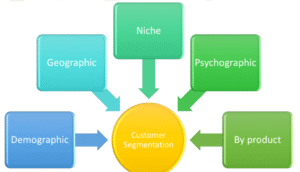Can You Use Both Inbound and Outbound Marketing?

Many businesses approach marketing as an either/or decision: either pursue inbound marketing with its content-driven, permission-based methodology, or implement outbound marketing with its direct, promotional approach. This false dichotomy overlooks the strategic advantage of integrating both methodologies into a comprehensive marketing strategy.
Understanding the Core Differences
Before exploring integration, it’s essential to understand what distinguishes these approaches:
Inbound Marketing attracts customers through relevant, helpful content and experiences tailored to them. It includes:
- Content marketing (blogs, videos, podcasts)
- SEO optimization
- Social media engagement
- Lead nurturing campaigns
Outbound Marketing directly reaches out to potential customers with promotional messages. It includes:
- Cold calling and email
- Direct mail
- TV and radio advertising
- Trade shows and events
- Print advertising
Why Integration Makes Strategic Sense
1. Complete Customer Journey Coverage
Inbound and outbound marketing excel at different stages of the customer journey:
- Outbound creates initial awareness efficiently, especially for new brands or products without established search visibility
- Inbound excels at education and nurturing during the consideration stages
- Combined approaches create multiple touchpoints throughout the journey, reinforcing messaging and increasing conversion probability
2. Diverse Audience Reach
Different audience segments respond to different marketing approaches:
- Some decision-makers actively search for solutions (inbound receptive)
- Others need to be introduced to solutions they haven’t considered (outbound receptive)
- Many respond to both approaches at different times in their buying process
An integrated strategy ensures you’re connecting with your entire potential market, not just segments that respond to a single methodology.
3. Short-Term and Long-Term Results
The timeframes for results differ significantly between approaches:
- Outbound marketing can generate immediate leads and sales, addressing short-term business needs
- Inbound marketing builds compounding value over time, creating sustainable organic traffic and lead sources
- Combined strategies deliver both immediate results and long-term growth
4. Data-Driven Optimization
When used together, inbound and outbound efforts provide more comprehensive data:
- Outbound campaign responses can reveal topics for inbound content creation
- Inbound engagement metrics can inform outbound messaging and targeting
- Cross-channel attribution models become more accurate and actionable
Practical Integration Strategies

Content Repurposing
Create content once, deploy it across both inbound and outbound channels:
- Transform detailed blog posts into direct mail pieces
- Convert webinar content into trade show presentations
- Use case study insights for cold outreach messaging
Coordinated Campaigns
Synchronize inbound and outbound efforts around unified themes:
- Launch outbound campaigns to drive traffic to inbound content hubs
- Follow up trade show connections with relevant content sequences
- Support direct marketing promotions with educational content
Sequential Targeting
Use outbound methods to initiate relationships, then transition to inbound nurturing:
- Identify high-value prospect segments
- Implement targeted outbound campaigns to create awareness
- Direct interested prospects to inbound content journeys
- Continue relationship building through permission-based communications
Retargeting Synergies
Leverage outbound methods to re-engage inbound prospects:
- Retarget website visitors (inbound) with display advertising (outbound)
- Follow up on downloaded content with direct outreach
- Send physical materials to complement digital engagement
Industry-Specific Integration Examples
B2B Technology
- Outbound: Account-based marketing campaigns targeting specific companies
- Inbound: Technical whitepapers and comparison guides
- Integration: Personalized outreach referencing specific content relevant to the prospect’s challenges
Retail/E-commerce
- Outbound: Seasonal direct mail catalogs and promotional emails
- Inbound: Product guides, styling content, and influencer collaborations
- Integration: QR codes in direct mail linking to expanded online content
Professional Services
- Outbound: Industry event sponsorship and networking
- Inbound: Thought leadership content and case studies
- Integration: Follow-up content journeys after in-person meetings
Measuring Integrated Marketing Success
Effective measurement requires both channel-specific and holistic metrics:
Channel-Specific Metrics
- Outbound: Response rates, cost per acquisition, direct conversion rates
- Inbound: Organic traffic, engagement rates, subscriber growth
Holistic Metrics
- Multi-touch attribution models
- Customer journey mapping
- Lifetime value analysis
- Brand awareness studies
Implementation Challenges and Solutions
Challenge: Budget Allocation
Solution: Start with a 70/30 split favoring your historical strength, then gradually adjust based on performance data.
Challenge: Messaging Consistency
Solution: Develop a unified messaging framework that adapts to channel contexts while maintaining core value propositions.
Challenge: Skills and Resources
Solution: Begin with integration in one product line or market segment before expanding company-wide.
Conclusion: The Power of “And” vs. “Or”
The most successful modern marketing strategies reject the inbound versus outbound debate in favor of strategic integration. By leveraging the strengths of each approach while mitigating their respective weaknesses, marketers can create comprehensive systems that:
- Generate immediate results while building long-term assets
- Reach prospects at every stage of awareness and consideration
- Create multiple touchpoints reinforcing key messages
- Adapt to changing market conditions and consumer behaviors
The question isn’t whether you should use inbound or outbound marketing—it’s how you can strategically integrate both to create a marketing ecosystem greater than the sum of its parts.
Learn more: Effective Outbound Marketing Strategies for Business Growth





